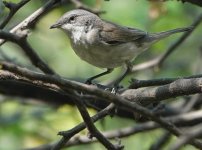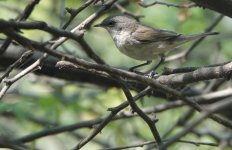Valéry Schollaert
Respect animals, don't eat or wear their body or s
Hi all,
I'd like to have your opinion about this whitethroat taken in March 2024 in Udaipur, Rajasthan, India. In bushes on the shore of a lake.
I'm discussing the case with others and we need more input.
Cheers !
I'd like to have your opinion about this whitethroat taken in March 2024 in Udaipur, Rajasthan, India. In bushes on the shore of a lake.
I'm discussing the case with others and we need more input.
Cheers !





